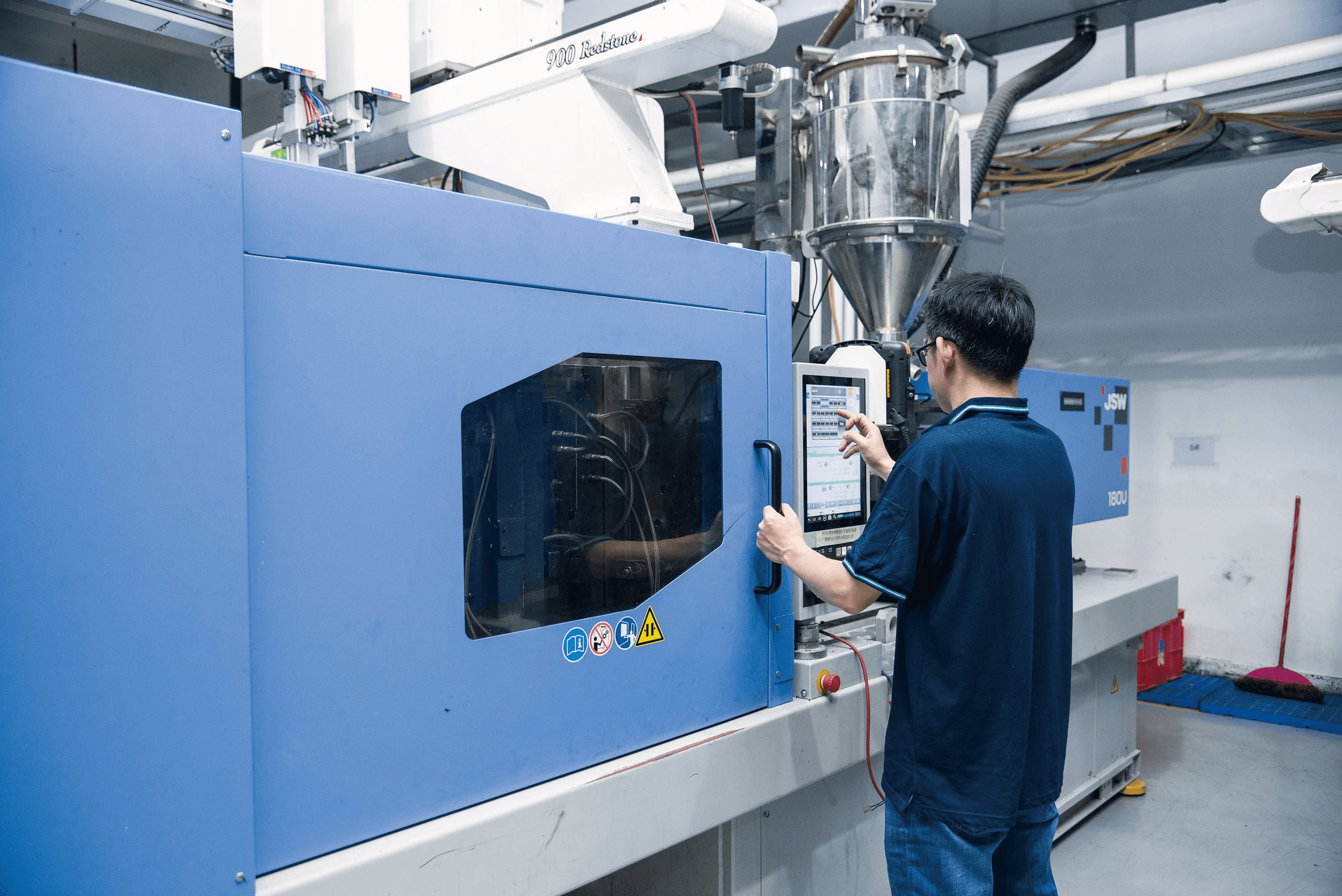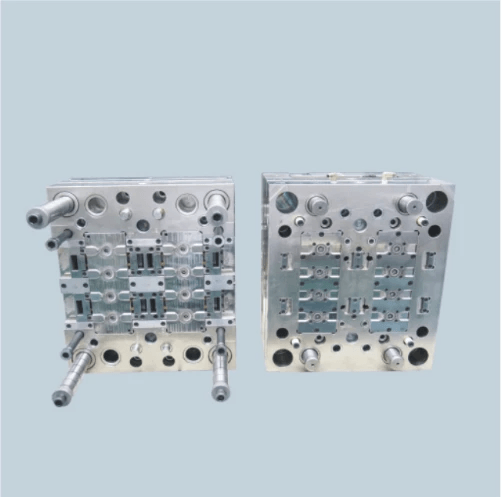Introduction

Overview of China Injection Molding Cost
China has established itself as a global leader in injection molding due to its competitive pricing and advanced manufacturing capabilities. The overall molding cost in China reflects not only the price of materials and labor but also the technological investments made by manufacturers like Baoyuan. Understanding how much does it cost for molding in this landscape can help businesses gauge their expenses and potential savings.
Importance of Understanding Molding Costs
Knowing how to estimate injection molding cost is vital for effective budgeting and project planning. Companies that overlook these costs may face unexpected financial burdens, jeopardizing their projects' success. Moreover, understanding why is molding expensive allows organizations to identify areas where they can cut costs without sacrificing quality.
Factors Influencing Molding Pricing
Several factors influence molding pricing, including design complexity, material selection, and production volume. For instance, intricate designs often lead to higher costs due to increased labor and engineering requirements—this is where knowing how much do molds cost becomes important as well. Additionally, fluctuating market demands can impact both material prices and overall production costs, making it essential for businesses to stay informed about industry trends.
Understanding Injection Molding

Injection molding is a fascinating process that transforms raw materials into intricate parts, playing a crucial role in numerous industries. Understanding this process helps businesses navigate the complexities of molding cost and ultimately aids in making informed decisions about their manufacturing needs.
Definition and Process Explained
At its core, injection molding involves injecting molten material—typically plastic—into a pre-designed mold to create specific shapes and components. The process begins with heating the plastic until it reaches a liquid state, followed by injecting it into the mold under high pressure. Once cooled, the mold opens to reveal the finished product, ready for use or further processing. This efficiency makes injection molding an attractive option for mass production, but many still wonder how to estimate injection molding cost effectively.
Applications in Various Industries
Injection molding finds its way into countless applications across various sectors such as automotive, consumer goods, electronics, and medical devices. Each industry benefits from the versatility of molded parts, whether it's creating durable automotive components or intricate electronic housings that require precision engineering. With such diverse applications comes a wide range of questions about how much does it cost for molding? The answer varies based on several factors including design complexity and material choice.
Role of Baoyuan in Molding Solutions
Baoyuan stands out as a key player in providing innovative solutions for injection molding challenges while keeping an eye on costs. By leveraging advanced technology and expertise in design optimization, Baoyuan helps clients reduce their overall molding cost without compromising quality. Their commitment to excellence not only addresses immediate needs but also considers long-term value—an essential factor when calculating how much do molds cost? Through strategic partnerships and efficient processes, Baoyuan aims to simplify the complexities of estimating injection molding costs for businesses worldwide.
How to Estimate Injection Molding Cost

Estimating injection molding cost can feel like navigating a maze, but with the right metrics and knowledge, you can find your way through. Understanding how to calculate molding cost involves considering several key factors that contribute to the final price tag. By breaking down these components, you’ll have a clearer picture of what influences China injection molding cost and how to manage it effectively.
Key Metrics for Cost Estimation
When it comes to estimating molding cost, there are several key metrics that you should keep in mind. First and foremost, the size of the part plays a significant role; larger parts typically require more material and longer cycle times, which can increase costs. Additionally, the number of cavities in the mold affects pricing—more cavities often mean higher upfront costs but lower per-unit prices when producing large quantities.
Another crucial metric is the cycle time, which is how long it takes to produce one part from start to finish. Shorter cycle times generally lead to lower overall costs since they allow for more parts to be produced in a given timeframe. Lastly, labor costs also factor into your calculations; skilled labor may command higher wages but can also lead to better quality and efficiency in production.
The Impact of Design Complexity
Design complexity is another critical element when estimating injection molding cost. Intricate designs with fine details or complex geometries often necessitate specialized molds that are more expensive to produce initially. This complexity can also lead to longer cycle times during production, further driving up costs.
However, while complex designs may seem daunting from a cost perspective, they can offer significant advantages in terms of functionality and market appeal. Investing in detailed design might yield higher initial costs but could result in better product performance or differentiation from competitors—a factor worth considering when asking How much do molds cost?
In summary, while design complexity can inflate initial estimates for molding costs, it’s essential not only to look at immediate expenses but also at long-term benefits that might arise from investing in sophisticated designs.
Material Selection and Its Effect on Pricing
Material selection is arguably one of the most influential factors affecting injection molding pricing—after all, not all plastics are created equal! Different materials come with varying price tags based on their properties like strength, flexibility, and heat resistance; therefore choosing high-performance materials could significantly increase your molding cost compared to standard options.
Moreover, some materials require specific processing conditions or equipment that may incur additional expenses during production—think about how much does it cost for molding? If you're working with advanced polymers or composites designed for specialized applications such as automotive or aerospace industries, be prepared for those extra dollars adding up quickly!
On top of this all-important choice lies another consideration: sustainability trends are pushing many manufacturers toward eco-friendly materials which might carry premium prices upfront but could save money over time through reduced waste or energy consumption during production processes.
Analyzing Molding Cost Components

When diving into the world of injection molding, understanding the cost components is crucial for effective budgeting and planning. Molding cost isn't just a simple figure; it's a complex interplay of various factors that can significantly impact your bottom line. By breaking down these components, businesses can better grasp how to estimate injection molding costs accurately and make informed decisions.
Breakdown of Labor, Materials, and Overhead
Labor costs are often one of the most significant contributors to overall molding cost. Skilled technicians are required to operate machinery and ensure quality production, which can lead to higher wages in regions with competitive labor markets like China. Additionally, material costs fluctuate based on market conditions and material type—plastic resins and additives can vary widely in price, affecting how much does it cost for molding.
Overhead expenses also play a vital role in determining how to calculate molding cost effectively. This includes everything from facility maintenance to utilities and equipment depreciation. Understanding each component allows manufacturers to pinpoint areas where they might save money or need to invest more for quality assurance.
Importance of Quality Assurance
Quality assurance is not merely an optional step; it’s essential in keeping molding costs manageable over time. Poor quality products lead to higher rejection rates, increased rework costs, and ultimately inflate the overall cost of production significantly. Therefore, investing in robust quality control measures ensures that you receive high-quality molds that meet specifications without incurring additional expenses later on.
Moreover, implementing effective quality assurance processes can improve customer satisfaction by delivering products that meet or exceed expectations consistently. This directly impacts long-term relationships with clients who may be willing to pay a premium for reliable products—thus making it easier to answer the question: why is molding expensive? It’s about ensuring value rather than just focusing on initial pricing.
The Cost of Prototyping and Testing
Prototyping is often seen as an upfront investment but is critical for successful product development in injection molding projects. The cost associated with creating prototypes can vary based on complexity but serves as an essential step in verifying designs before full-scale production begins—this helps mitigate risks further down the line regarding how much do molds cost when they’re finally made.
Testing prototypes ensures that all design specifications are met while identifying any potential issues before committing resources into mass production—a process that could otherwise lead to costly mistakes if overlooked initially! While prototyping adds an additional layer of expense, it's a strategic move toward reducing overall molding costs by catching problems early.
How Much Do Molds Cost?

When diving into the world of injection molding, understanding how much molds cost is crucial. The price of molds can vary significantly based on various factors, making it essential to grasp the elements that contribute to molding costs. This section will explore these factors, compare single-color and double-color molds, and highlight the long-term value of investing in quality molds.
Factors Affecting Mold Pricing
Several factors come into play when determining mold pricing, and they can dramatically influence how to calculate molding cost. Firstly, the complexity of the mold design plays a significant role; intricate designs require more time and precision during manufacturing, thus increasing costs. Additionally, material choice for the mold itself—whether steel or aluminum—affects durability and overall expenses; steel molds tend to be more expensive but offer longevity for high-volume production runs.
Another important aspect is the manufacturing process involved in creating a mold. Advanced technologies like CNC machining or 3D printing can drive up initial costs but may save money in the long run through efficiency gains. Lastly, location matters; China Injection Molding Cost is often lower than in Western countries due to cheaper labor and materials but may involve trade-offs regarding quality control.
Comparison of Single-Color vs. Double-Color Molds
When considering how much do molds cost?, one must weigh single-color against double-color options carefully. Single-color molds are typically less expensive due to their simpler design and fewer technical requirements during production; they are ideal for straightforward projects needing minimal color variation. On the other hand, double-color molds come with higher initial costs but allow for more complex designs that incorporate multiple colors in a single part—a game-changer for brands looking to make an impact.
While single-color molds might seem like an attractive option initially because of lower molding costs, double-color molds can offer greater versatility and visual appeal in products. This investment pays off by attracting customers through enhanced aesthetics while potentially reducing assembly time since multiple colors are integrated into one piece rather than requiring separate components. Therefore, when evaluating how to estimate injection molding cost effectively, consider not just upfront expenses but also potential market advantages.
Long-term Value of Investing in Quality Molds
Investing in quality molds may seem daunting at first glance when pondering how much does it cost for molding? However, this decision often leads to significant long-term savings and benefits that outweigh initial expenses. High-quality molds reduce maintenance needs and improve consistency across production runs—factors critical for maintaining product integrity over time.
Moreover, durable molds can handle larger volumes without degrading performance or quality; this longevity translates into lower per-unit costs as production scales up over time—an essential consideration when exploring why is molding expensive? By choosing superior materials and craftsmanship upfront, manufacturers position themselves favorably against competitors who may cut corners on mold quality.
In summary, understanding mold pricing requires careful consideration of various influencing factors including design complexity and material selection while also weighing short-term versus long-term benefits associated with different types of molds available on the market today.
Why is Molding Expensive?

When you start diving into the realm of injection molding, one question often surfaces: why is molding expensive? Understanding the intricacies behind China injection molding cost can unveil a complex web of supply chain challenges, technological demands, and fluctuating market conditions. All these factors contribute to how to calculate molding cost accurately and why it might feel like you're breaking the bank for those seemingly simple plastic parts.
Exploring Supply Chain Challenges
Supply chain challenges play a significant role in determining molding costs. For instance, sourcing raw materials can be a logistical nightmare; disruptions in global supply chains can lead to increased prices for essential components. When considering how much does it cost for molding, remember that every hiccup along the supply chain translates into higher costs passed on to you.
Additionally, transportation issues can further exacerbate these costs. If shipping delays occur or fuel prices rise unexpectedly, manufacturers might have no choice but to raise their prices to maintain profitability. This ripple effect makes understanding the supply chain's impact on China injection molding cost crucial for businesses looking to budget effectively.
The Role of Technology in Costs
The role of technology in injection molding cannot be overstated; it’s both a boon and a bane when it comes to costs. Advanced machinery and automation enhance production efficiency but come with hefty upfront investments that manufacturers must recoup through higher pricing strategies. Thus, when pondering how to estimate injection molding cost, consider that cutting-edge technology often leads to increased initial expenses.
Moreover, maintaining this high-tech equipment requires ongoing investment in training and maintenance—further inflating overall costs. While technology may streamline processes and reduce labor needs over time, its initial financial burden can make you wonder why is molding expensive at all!
Demand Fluctuations and Their Impact
Demand fluctuations significantly impact how much molds cost as well as overall manufacturing pricing strategies. When demand surges—think seasonal spikes or unexpected trends—manufacturers may struggle to keep up with production schedules without raising prices accordingly. Consequently, understanding demand patterns becomes essential for businesses trying to figure out how much does it cost for molding during peak times.
Conversely, during downturns or economic slowdowns, manufacturers may lower their prices just to keep the machines running and avoid excess inventory—a double-edged sword that complicates long-term planning around China injection molding costs. As such fluctuations are unpredictable yet inevitable, they add another layer of complexity when trying to calculate your total investment in injection molded products accurately.
Conclusion

As we wrap up our exploration of injection molding costs, it's clear that understanding these expenses is crucial for businesses looking to optimize their manufacturing processes. From the complexity of designs to the choice of materials, each factor plays a significant role in determining how to estimate injection molding cost accurately. By grasping these nuances, businesses can make informed decisions and better manage their budgets.
Key Takeaways on Molding Costs
One of the most important takeaways regarding molding costs is that they are influenced by a myriad of factors, including labor, materials, and overhead expenses. Understanding how to calculate molding cost involves considering everything from design intricacies to quality assurance measures. Additionally, the price of molds varies widely based on complexity and material choices; thus, knowing how much do molds cost can help businesses plan accordingly.
Strategic Tips for Cost Management
To effectively manage molding costs, consider investing in high-quality molds upfront; while they may seem expensive initially, they often lead to long-term savings through durability and efficiency. Another strategic tip is to streamline your design process—simplifying product designs can significantly lower production costs. Lastly, keep an eye on market trends; being aware of why molding is expensive can help you anticipate fluctuations in pricing and adjust your strategies accordingly.
Future Outlook for Injection Molding Pricing
Looking ahead, the future outlook for China injection molding cost suggests a potential stabilization as supply chain challenges are addressed and technology advances continue to evolve manufacturing processes. However, demand fluctuations may still pose challenges that could affect pricing structures over time. By staying informed about industry trends and technological advancements, companies can better prepare for shifts in how much does it cost for molding services.

